Tariff classification of suitcases, travelling bags, backpacks (rucksacks) and handbags of Heading 42.02
Memorandum D10-15-29
Ottawa, April 18, 2023
ISSN 2369-2391
This document is also available in PDF (415 KB) [help with PDF files]
In brief
This memorandum has been updated as a result of the Canadian International Trade Tribunal (CITT) and Federal Court of Appeal (FCA) decisions in the Michael Kors (AP-2018-048) appeal regarding the classification of certain handbags.
This memorandum outlines the Canada Border Services Agency’s (CBSA) interpretative policy with respect to the tariff classification of suitcases, travelling bags, backpacks (rucksacks) as containers used for travel of heading 42.02. It also serves to clarify the CBSA interpretation of handbags of subheading 4202.2X.
Legislation
Schedule to the Customs Tariff
Chapter 42 - Articles of leather; saddlery and harness; travel goods, handbags and similar containers; articles of animal gut (other than silk-worm gut).
Heading 42.02 - Trunks, suit-cases, vanity-cases, executive-cases, brief-cases, school satchels, spectacle cases, binocular cases, camera cases, musical instrument cases, gun cases, holsters and similar containers; travelling-bags, insulated food or beverage bags, toilet bags, rucksacks, handbags, shopping bags, wallets, purses, map-cases, cigarette-cases, tobacco-pouches, tool bags, sports bags, bottle-cases, jewellery boxes, powder-boxes, cutlery cases, and similar containers, of leather or of composition leather, of sheeting of plastics , of textile materials, of vulcanized fibre or of paperboard, or wholly or mainly covered with such materials or with paper.
Guidelines and general information
Containers used by travellers (i.e. trunks, suitcases, travel bags)
Background
1. Traditionally, luggage was constructed from or covered with leather materials. This is why travel containers are largely provided for in Chapter 42.
2. Changes in travellers' habits stemming from increased travel security and the implementation of carrier luggage fees, has given rise to an ongoing evolution in the design and construction of travel goods. This evolution has resulted in luggage with versatile functionality and constructed from materials that are both lightweight and durable.
3. Heading 42.02 is divided into two parts, each part separated by a semi-colon. "Trunks" and "suitcases" (commonly known as "luggage") are provided for in the first part of heading 42.02. They are designed to transport and protect a traveller's personal belongings. A "travel bag" is a travel container named in the second part of the heading.
4. It is important to note that there is no size or dimension criteria used to determine whether a piece of luggage is classified as a "suitcase" or as a "travelling bag".
Interpretative guidelines
Suitcases
5. Definition: A case for carrying clothes, etc., with a handle and a flat hinged lid (Pocket Oxford Dictionary).
6. Suitcases are specifically named in the first part of the heading, and under the first dash breakout of heading 42.02 and more specifically provided for under the following subheadings:
| 4202.11 | --With outer surface of leather or composition leather |
| 4202.12 | --With outer surface of plastics or of textile materials |
| 4202.19 | --Other |
7. To be classified as a suitcase under one of these subheadings, the good being reviewed must satisfy the following criteria:
Shape: Rectangular or capacious container of fixed shape; distinct flat top and bottom, and four sides that allow for easy stacking or stowing in a cargo hold. The top lid and bottom container are permanently joined together by means of a hinge, or stitched seam along one side, making provision for two or more separate packing compartments when opened flat.
Material: Made of material that allows the suitcase to maintain its capacious shape, even when empty (non-collapsible). Two options:
- 1) Hard shell: Typically made from molded plastic, poly-carbon or light metal material with no additional support foundation.
- 2) Malleable textile shell: Made of strong, stiff and durable material, which may have an additional support foundation to give the suitcase additional strength.
Interior access: To access the suitcase interior, the case must be laid horizontally flat and the top compartment or lid will be unfastened and flipped open, exposing the top and bottom compartments side by side. The suitcase may be opened or closed by means of clasps, zippers, or straps. It may also have provision for a lock.
Handles: To facilitate manual lifting and maneuvering, suitcases feature grab handles that are often designed to lay flush along one or more sides of the case to prevent snagging or catching during stowage. Wheeled suitcases feature telescoping/collapsible trolley handles that allow the traveller to wheel the suitcase in an upright vertical position.
Examples of suitcases

Figure 1 – Suitcase – shape and sizes
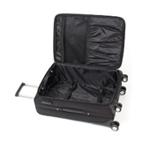
Figure 2 - Suitcase - interior access
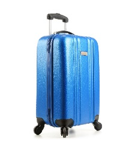
Figure 3 - Suitcase - hard shell
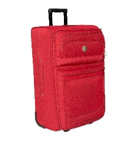
Figure 4 - Suitcase - malleable textile shell
Travelling bags
8. Travelling bags are specifically named in the second part of Heading 42.02 and are provided under the following subheadings:
| -Other | |
| 4202.91 | --With outer surface of leather or of composition leather |
| 4202.92 | --With outer surface of sheeting of plastics or of textile materials |
| 4202.99 | --Other |
9. The term "travelling bags" refers to a broad category of luggage goods that do not satisfy the description of the rigid luggage-type containers listed in the first part of the heading. They include those travel goods referred to as duffle bags, hand luggage, weekend bags, overnight bags, etc. Bags classified under these subheadings have the following characteristics:
Shape: Travelling bags come in an assortment of shapes, including among others: barrel, bucket, oblong, and rectangular. When empty of their contents, some travelling bags may continue to hold their shape, while others may collapse, be flattened, or folded.
Material: The material used to construct a travelling bag is generally malleable and provides flexibility without being excessively rigid or stiff, like a suitcase. Traveling bags, unlike suitcases, do not have hard shell exteriors, but may, however, have rigid bottoms. The shell exteriors are made of leather or of composition leather, of sheeting of plastics, of textile materials, of vulcanised fibre or of paperboard, or wholly or mainly covered with such materials or with paper.
Interior access: Access to the interior is typically through the top of the bag, via the bag’s opening/closing aperture - zippers, clasps, magnets, flaps, drawstrings, etc. Unlike suitcases, traveling bags do not have to be laid horizontally or flipped open flat to access their interior. The bag may have separate side pockets or compartments to facilitate travel storage organization.
Handles: Handles and/or shoulder straps are a prominent design characteristic of travelling bags, and these are conveniently situated on the bag to comfortably accommodate the traveller’s hand or shoulder. Like suitcases, travelling bags may feature wheels and telescoping trolley handles that allow the traveller to “wheel” the travelling bag rather than carry it in the hand or on the shoulder. However, this is secondary compared to the primary intended design as hand or shoulder carry luggage.
Examples of travelling bags
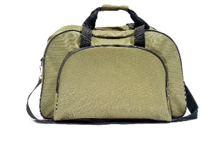
Figure 5 – Travelling Bag - with handles and shoulder strap
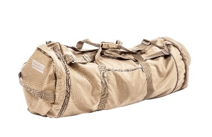
Figure 6 - Travelling Bag - Barrel shape
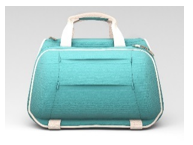
Figure 7 - Travelling Bag – with handles

Figure 8 - Travelling Bag – with wheels and telescoping trolley handles
Haversacks, knapsacks and rucksacks (Backpacks)
10. Definition: The Canadian Oxford Dictionary defines the term "rucksack" as: a "backpack". It defines "backpack" as "knapsack". It defines "knapsack" as a "bag of canvas, nylon, or other weatherproof material, carried strapped on the back by hikers, students, soldiers, etc."
11. Rucksack, knapsack or packsack (commonly known in North American as "backpacks") are equipped with two shoulder straps to secure the pack onto the wearer, while a haversack traditionally has one strap and is carried over the shoulder. They are all classified under subheading 4202.9X as "Other" containers.
| -Other | |
| 4202.91 | --With outer surface of leather or of composition leather |
| 4202.91.20 00 | ---Tool bags, haversacks, knapsacks and rucksacks |
And
| 4202.92 | --With outer surface of sheeting of plastics or of textile materials |
| 4202.92.20 | ---Tool bags, haversacks, knapsacks, packsacks and rucksacks |
| 4202.92.20 90 | ------Other |
| 4202.99 | --Other |
| 4202.99.90.00 | ---Other |
12. Backpacks are designed to carry the weight of the pack’s contents on the back of the traveller rather than carried in the hand. The pack's content can include clothes, food, and other inanimate supplies. Backpacks are available in a variety of shapes and designs. Some suspend loosely on the traveller’s back, while others may be equipped with a metal frame and/or waist belt to help evenly distribute the pack’s load.
13. Hybrid bags that have straps for carrying on the back are to be classified as backpacks for tariff classification purposes. e.g., backpack cooler insulated bags, backpack purses, backpack laptop bags, etc.
Shape: Typically sack or barrel-like in its basic form (with or without a frame). The dominant characteristic of these travel goods is the presence of shoulder strap(s) (some backpacks may only have one shoulder strap). Backpacks may consist of a single large sack, or be subdivided into several pockets and/or compartments.
Material: Various materials, including of leather or of composition leather, of sheeting of plastics, of textile materials, of vulcanised fibre or of paperboard, or wholly or mainly covered with such materials or with paper.
Interior access: Zippers, clasps, clips, drawstrings, etc. The pack may have separate side pockets or compartments to facilitate travel storage organization.
Handles: Many are equipped with a modest grab handle to facilitate the putting on or taking off of the pack from the wearer’s back. Backpacks may also be accessorized with wheels and telescoping trolley handles, but these are a secondary feature to the shoulder straps and the intended design of wearing the pack on the wearer’s back.
Examples of backpacks
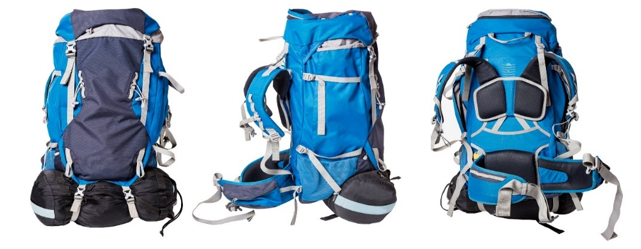
Figure 9 – Backpacks – Shape - sack or barrel-like (with or without a frame)

Figure 10 – Backpacks – with two shoulder straps

Figure 11 – Backpacks – with one shoulder strap
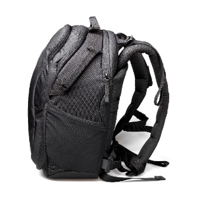
Figure 12 – Backpacks – Construction materials - textile
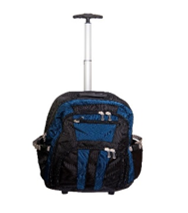
Figure 13 – Backpacks – with wheels and handle
Handbags
14. Definition: A bag held in the hand or hung from a shoulder strap and used for carrying small personal articles and money (Merriam-Webster Dictionary).
Background
15. The wording of Chapter 42 makes clear that "handbags" and "travel containers" are two distinct categories of containers. Travel containers are designed to store, transport, and protect the personal belongings of a traveller, whereas handbags are designed to consolidate and carry multiple types of everyday personal items. Handbags are specifically provided for under subheadings 4202.2X.
Interpretative guidelines
| -Handbags, whether or not with shoulder strap, including those without handle: | |
| 4202.21.00 00 | --With outer surface of leather or of composition leather |
| 4202.22 | --With outer surface of sheeting of plastics or of textile materials |
Shape: Various (satchel, saddle, messenger, clutch, bucket, cross body, etc.)
Material: Made of leather or of composition leather, of sheeting of plastics, of textile materials, of vulcanized fibre or of paperboard, or wholly or mainly covered with such materials or with paper. May have any number of pockets or openings.
Interior access: Various
Handles: May have one or two handles; a single shoulder or cross body strap; or no handle at all (clutch style)
16. Often described as a fashion accessory, handbags come in an assortment of styles and sizes. A handbag typically has capacity to contain a wallet and/or change purse, eyeglasses, keys, small personal care items such as medication or cosmetics, a hair brush or comb, and a mobile phone. Nonetheless, daily essentials can vary significantly from one person to another, which means that handbag sizes can also vary significantly.
17. The term "handbag" is not expressly defined in either the Customs Tariff or the explanatory notes. The CBSA thus relies on the CITT's decision in Michael Kors (Canada) Holdings Ltd. (AP-2018-048). According to the CITT decision, when determining whether goods constitute "handbags" for the purposes of heading 42.02, consideration must be made to the purpose and function of carrying everyday essential items. The CITT decision concluded that, for tariff classification purposes, the term "handbags" can include smaller or larger bags which serve to carry everyday personal items.
18. In addition, the CITT in the aforementioned decision accepted that the goods in issue marketed as "totes" or "tote bags" were, in all material aspects, considered to be similar to the handbags in the World Customs Organization (WCO) Classification Opinion 4202.21/1 (i.e., top zipper or magnetic closure, inner lining, carrying straps, interior and exterior pockets or compartments including those for cell phones). Thus, for tariff classification purposes, regard shall be had to the common characteristics of a "handbag" in this opinion published by the WCO.
19. Furthermore, in the CITT's view, handbags may be described commercially in a variety of ways, depending on their specific style and features, and definitions in the popular sense suggest that handbags are capable of including goods which are marketed as "tote bags"
20. The North American term "purse" is synonymous to a handbag. However, the European term "purse" used in heading 42.02 and associated Explanatory Notes is a small pouch used to carry money that fits into a handbag (in other words, a "coin purse")
Examples of handbags
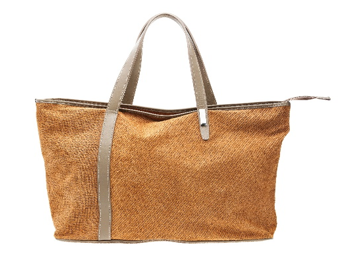
Figure 14 – Tote hand bag
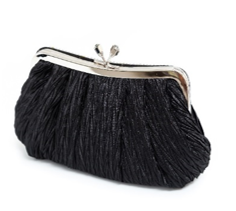
Figure 15 – Clutch bag

Figure 16 – Handbag – with shoulder strap

Figure 17 – Handbag – Drawstring, handle and cross body
21. "Travelling bags" are among the types of containers named in the terms of heading 42.02. In situations where uncertainty arises whether a bag is classified as a "handbag" of subheading 4202.2X or a "travelling bag" or other bag of subheading 4202.9X, consideration should be given to any dominant design or construction features. Such features include padded compartments to protect laptops; accordion file dividers to accommodate and organize paper documents; compartments dedicated to clothing; plastic liners for food or groceries; specially designed compartments to separate wet towels and gym gear; diapers change pads; compartments or pockets to store yoga mats, tennis rackets; etc. Specific features such as these indicate that the bag should be classified as per their intended design, for example, as a briefcase or school satchels of subheading 4202.1X; or alternatively as a travelling bag, messenger bag, shopping bag, fanny pack or sports bag under subheading 4202.9X.
Additional Information
22. For certainty regarding the tariff classification of a product, importers may request an advance ruling on tariff classification. Details on how to make such a request are found in CBSA Memorandum D11-11-3, Advance Rulings for Tariff Classification, which is found on the CBSA website.
23. For more information, call contact the CBSA Border Information Service (BIS):
Calls within Canada & the United States (toll free): 1-800-461-9999
Calls outside Canada & the United States (long distance charges apply):
1-204-983-3550 or 1-506-636-5064
TTY: 1-866-335-3237
Contact Us online (webform)
Contact Us at the CBSA website
References
- Issuing office
- Trade Policy Division
Trade and Anti-dumping Programs Directorate
Commercial and Trade Branch - Headquarters file
- Legislative references
- Customs Tariff Section VIII, Chapter 42
- Other references
- Memorandum D11-11-3, Advance Rulings for Tariff Classification
- Superseded memorandum D
- D10-15-29, dated
Page details
- Date modified: